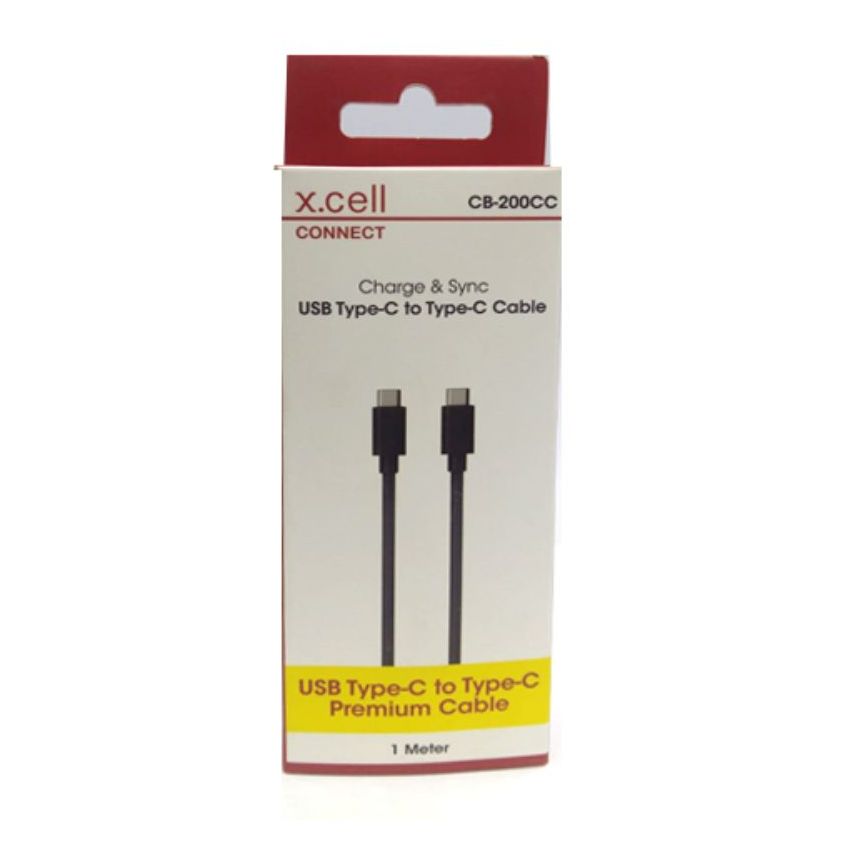X.cell CB-200CC USB Type C to Type C Cable
Features:
Additional Features:
- Reversible Connector
- High Data Transfer Speeds
- Power Delivery (PD)
- Universal Compatibility
- Audio and Video Support
- Alternate Modes
- Durable Build
- Compact Size
- Future-Proofing
Additional Features:
- Reversible Connector: USB Type-C cables have a reversible connector, which means they can be plugged in either way, eliminating the frustration of trying to figure out the correct orientation.
- High Data Transfer Speeds: USB Type-C cables support high-speed data transfer rates, depending on the version of USB technology used (USB 3.1 Gen 1, Gen 2, USB 4, etc.). This allows for quicker file transfers and improved device synchronization.
- Power Delivery (PD): USB Type-C cables often support Power Delivery, which is a technology that allows higher power levels to be delivered over the cable. This enables fast charging for various devices, including smartphones, laptops, and other compatible electronics.
- Universal Compatibility: USB Type-C is becoming the standard for many devices, including laptops, smartphones, tablets, and accessories. This compatibility makes it easier to use a single cable for multiple devices.
- Audio and Video Support: Some USB Type-C cables support audio and video signals, allowing them to transmit high-definition audio and video content between compatible devices.
- Alternate Modes: USB Type-C cables can support alternate modes, such as DisplayPort or Thunderbolt, which enable various functionalities beyond simple data and power transfer. For example, Thunderbolt 3 offers extremely high data transfer rates and support for multiple monitors.
- Durable Build: Quality USB Type-C cables are often built with durable materials to ensure longevity and resistance to wear and tear.
- Compact Size: USB Type-C connectors are smaller and more compact than their predecessors, making them suitable for slim devices like ultrabooks and smartphones.
- Future-Proofing: USB Type-C is expected to be the standard for the foreseeable future, which means investing in Type-C cables is likely to remain relevant as technology evolves.







